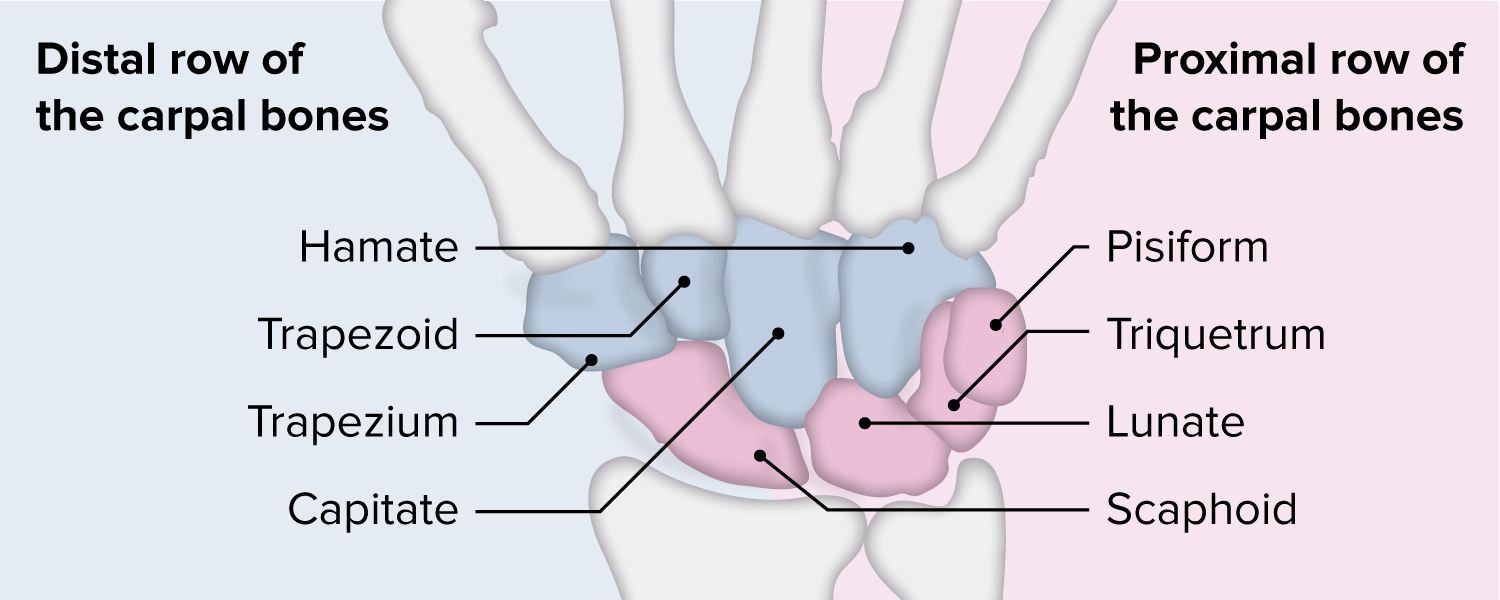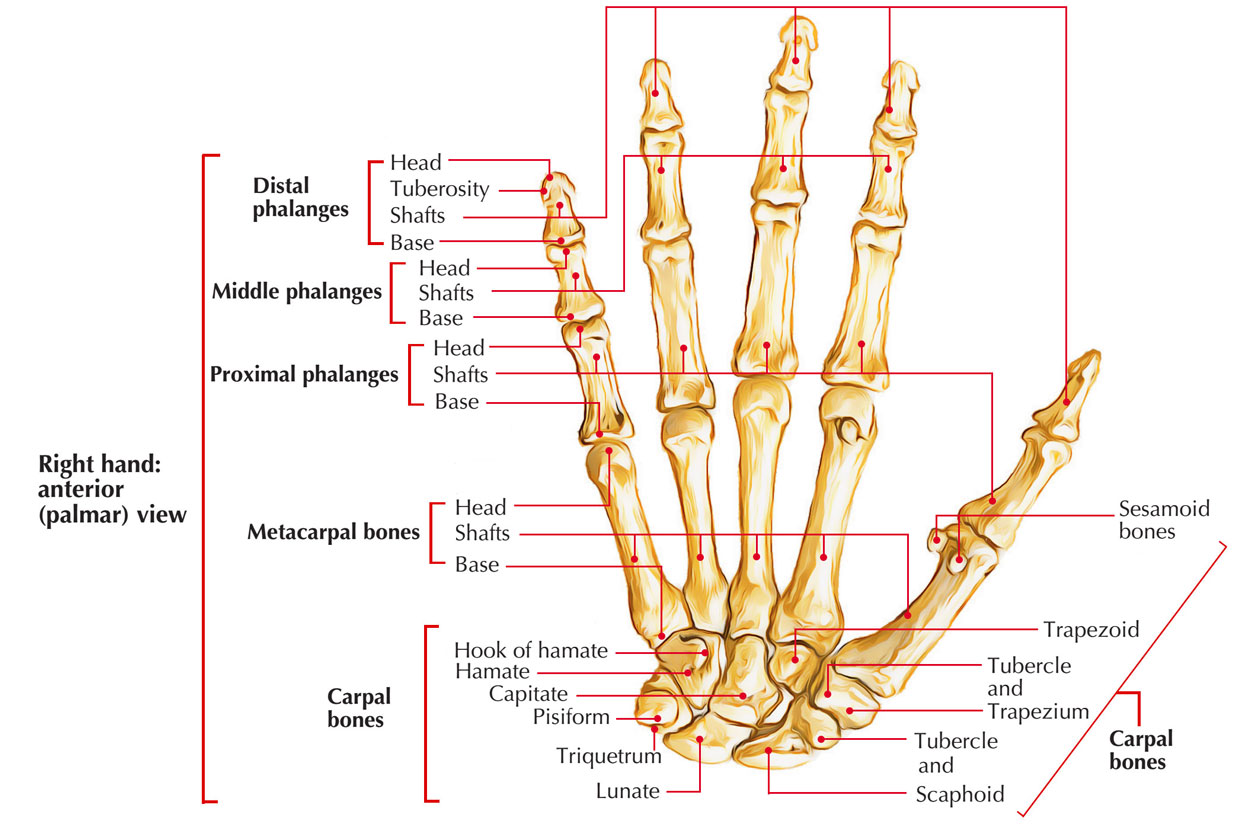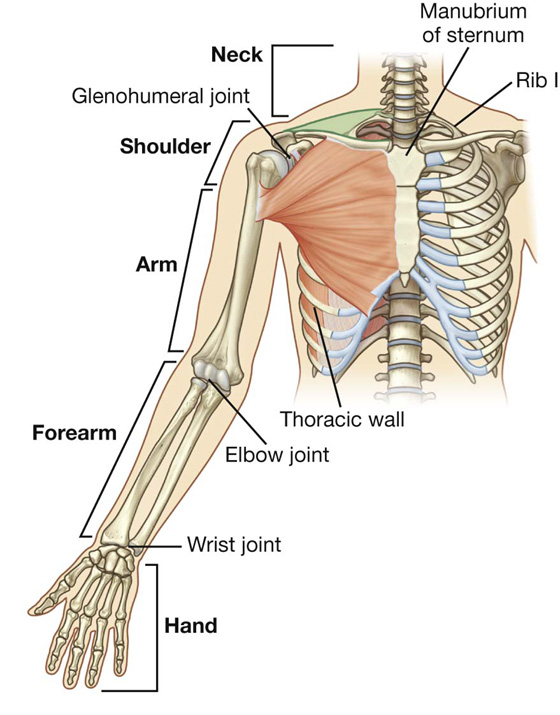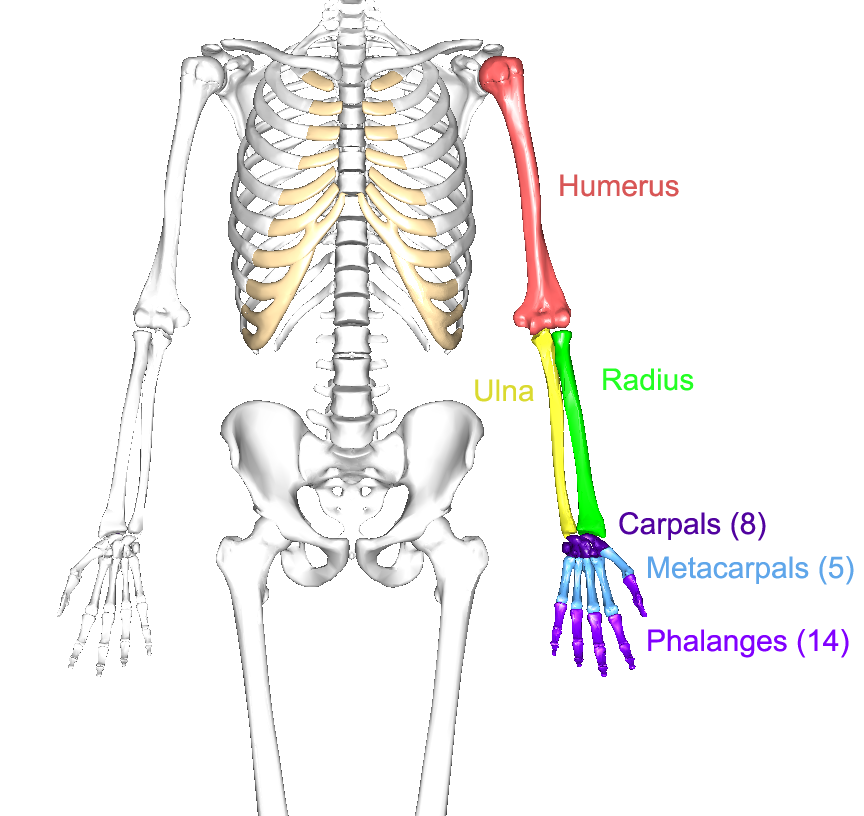From Proximal To Distal What Bones Form The Upper Limb
From Proximal To Distal What Bones Form The Upper Limb - The upper limb consists of bones arranged from proximal to distal as follows: The condyle on the distal humerus has a. From proximal to distal, what bones form the upper limb? 1.carpals 2.humerus 3.metacarpals 4.phalanges 5.ulna and radius. The distal end of the humerus articulates with the two bones of the forearm (lower arm): The radius and the ulna. Humerus, ulna and radius, carpals, metacarpals, and phalanges. The expanded distal end of each metacarpal bone articulates at the metacarpophalangeal joint with the proximal. From proximal to distal, what bones form the upper limb?
1.carpals 2.humerus 3.metacarpals 4.phalanges 5.ulna and radius. The upper limb consists of bones arranged from proximal to distal as follows: The radius and the ulna. From proximal to distal, what bones form the upper limb? The distal end of the humerus articulates with the two bones of the forearm (lower arm): From proximal to distal, what bones form the upper limb? The expanded distal end of each metacarpal bone articulates at the metacarpophalangeal joint with the proximal. Humerus, ulna and radius, carpals, metacarpals, and phalanges. The condyle on the distal humerus has a.
From proximal to distal, what bones form the upper limb? The condyle on the distal humerus has a. From proximal to distal, what bones form the upper limb? The distal end of the humerus articulates with the two bones of the forearm (lower arm): The expanded distal end of each metacarpal bone articulates at the metacarpophalangeal joint with the proximal. Humerus, ulna and radius, carpals, metacarpals, and phalanges. 1.carpals 2.humerus 3.metacarpals 4.phalanges 5.ulna and radius. The radius and the ulna. The upper limb consists of bones arranged from proximal to distal as follows:
Upper Limb Basicmedical Key
The condyle on the distal humerus has a. From proximal to distal, what bones form the upper limb? The distal end of the humerus articulates with the two bones of the forearm (lower arm): 1.carpals 2.humerus 3.metacarpals 4.phalanges 5.ulna and radius. The expanded distal end of each metacarpal bone articulates at the metacarpophalangeal joint with the proximal.
Bones of the Upper Limb Anatomy and Physiology I
The distal end of the humerus articulates with the two bones of the forearm (lower arm): The upper limb consists of bones arranged from proximal to distal as follows: The condyle on the distal humerus has a. 1.carpals 2.humerus 3.metacarpals 4.phalanges 5.ulna and radius. The radius and the ulna.
[Solved] Place the following bones in order from proximal to distal
From proximal to distal, what bones form the upper limb? Humerus, ulna and radius, carpals, metacarpals, and phalanges. The condyle on the distal humerus has a. From proximal to distal, what bones form the upper limb? The upper limb consists of bones arranged from proximal to distal as follows:
Major body bones Cranium(also know as the skull) support the structure
From proximal to distal, what bones form the upper limb? The upper limb consists of bones arranged from proximal to distal as follows: The condyle on the distal humerus has a. The radius and the ulna. The distal end of the humerus articulates with the two bones of the forearm (lower arm):
Anatomy & Kinesiology Final Review 2023 Jeopardy Template
The radius and the ulna. 1.carpals 2.humerus 3.metacarpals 4.phalanges 5.ulna and radius. The distal end of the humerus articulates with the two bones of the forearm (lower arm): From proximal to distal, what bones form the upper limb? The expanded distal end of each metacarpal bone articulates at the metacarpophalangeal joint with the proximal.
Bones of the Hand Anatomy Earth's Lab
The distal end of the humerus articulates with the two bones of the forearm (lower arm): 1.carpals 2.humerus 3.metacarpals 4.phalanges 5.ulna and radius. The condyle on the distal humerus has a. From proximal to distal, what bones form the upper limb? The expanded distal end of each metacarpal bone articulates at the metacarpophalangeal joint with the proximal.
Upper Limb Basicmedical Key
The upper limb consists of bones arranged from proximal to distal as follows: From proximal to distal, what bones form the upper limb? The radius and the ulna. Humerus, ulna and radius, carpals, metacarpals, and phalanges. The condyle on the distal humerus has a.
Upper Limb Basicmedical Key
Humerus, ulna and radius, carpals, metacarpals, and phalanges. The expanded distal end of each metacarpal bone articulates at the metacarpophalangeal joint with the proximal. The upper limb consists of bones arranged from proximal to distal as follows: The radius and the ulna. The condyle on the distal humerus has a.
22 Introduction to the Upper Limb, Back, Thorax, and Abdomen Pocket
Humerus, ulna and radius, carpals, metacarpals, and phalanges. The expanded distal end of each metacarpal bone articulates at the metacarpophalangeal joint with the proximal. The upper limb consists of bones arranged from proximal to distal as follows: The radius and the ulna. The distal end of the humerus articulates with the two bones of the forearm (lower arm):
The upper limbs Human Anatomy and Physiology Lab (BSB 141) Course
The upper limb consists of bones arranged from proximal to distal as follows: The expanded distal end of each metacarpal bone articulates at the metacarpophalangeal joint with the proximal. The distal end of the humerus articulates with the two bones of the forearm (lower arm): The condyle on the distal humerus has a. From proximal to distal, what bones form.
The Upper Limb Consists Of Bones Arranged From Proximal To Distal As Follows:
The distal end of the humerus articulates with the two bones of the forearm (lower arm): 1.carpals 2.humerus 3.metacarpals 4.phalanges 5.ulna and radius. The radius and the ulna. The condyle on the distal humerus has a.
From Proximal To Distal, What Bones Form The Upper Limb?
From proximal to distal, what bones form the upper limb? The expanded distal end of each metacarpal bone articulates at the metacarpophalangeal joint with the proximal. Humerus, ulna and radius, carpals, metacarpals, and phalanges.








